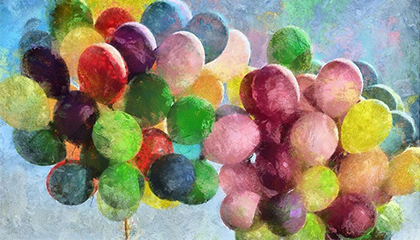Views: 103 Author: Site Editor Publish Time: 2019-09-05 Origin: Site

Many people do not learn watercolor painting because they worry that it is too difficult. Watercolor painting can be challenging at first, but when you get started, it is simple and cheap: all you need is paint, water and painting brushes. You can become a professional watercolor painters by learning about the drawing tools, drawing techniques and skills used by the artist.
There are three main types of watercolor paints outside packaging: tube paste watercolor paint, solid watercolor paint and bottled liquid watercolor paint. The tube paste watercolor paint is the most commonly used paint for watercolor painters. Its concentration is similar to that of oil paints, and it has the advantage of immediate permeation, the brightness and transparency are better. The solid watercolor paint are divided into two types: dry and wet. The dry watercolor paint are oblate and need to be smeared with a pen to extract the paint. The quality of the wet watercolor paint is better and the brightness of the color is higher, it is always placed in the white square plastic box. The liquid watercolor paints are placed in clear plastic bottles and are characterized by ablation background-type gradual thin coatings, it is often used by illustrators.
Watercolor brushes usually have soft long hair and are designed for use in watery medium. Natural fiber brushes - such as sable or squirrels - are the best, but these are scarce and expensive. A high quality soft synthetic brush is available for lower cost. Brushes come in a variety of sizes and shapes, but you only need one or two larger flat brushes for washing and several round brushes of different sizes for detail.
There are many kinds of watercolor papers. Some are solid and some are soft, the lines are rough and fine. The thickness of the paper is measured by its weight. The higher the pound, the thicker the paper and the better the quality. The characteristics of the paper are different and the temperament is also different. Generally speaking, the smooth and detailed texture of the paper is suitable for drawing fine watercolors. During the drawing process, the brush stroking can be smoothly and steadily layered, and the visual effects in the picture are delicate and comfortable. Rough texture paper is suitable for impromptu, sketching watercolors.
The performance and characteristics of watercolor paints are closely related to the quality of the picture. When painting, it is necessary to grasp the properties of transparent and translucent, easy to dry, changeable, precipitated, ash, and erosion. The chroma of the watercolor paint will change in the dry and wet state. When the picture is in the wet state, the watercolor color is heavy, but when the picture is completely dry, the color will be slightly lighter. In order to avoid the color differences between the dry and wet state, the color should be mixed when painting. Experienced painters will adjust the color to a little more heavy in advance to achieve the desired results.
Inexperienced painters often choose a small container of water to clean the brushes between colors. They quickly discovered that the water became dark and blurred, muddying their color and turning the entire picture brown. The best way to keep your color clean is to keep the water clean. If you use a large container, the water will keep clean longer. Some professional artists use two large containers, one for cleaning brushes and the other for wetting them before applying color. Thoroughly clean the brush with running water and a little soap each time you finish painting, then gently squeeze it with a paper towel or rag.
With watercolors, you can paint from light to dark, leaving the white of the paper as your lightest light. Therefore, you need to know the location of these areas in advance so that you can paint around them. You can avoid them carefully, or you can apply masking fluids on these areas to protect them. The masking liquid is dried into a rubbery material that you can easily wipe them off with your fingers. You can also use the tapes to cover the area you want to leave blank.
The beauty of watercolor paint is its transparency and brightness. Appropriately applied, watercolor shows the complexity of the color by displaying layers of transparent color. It allows light to pass through the paint layer and reflect off the paper. So, use a light touch. For better control of the paint but less transparency, use less water on the brush; use more water for greater transparency. Try to find the balance that suits you.
Many people think that you can't fix the mistakes in watercolors. That is not true. There are many ways to fix the mistakes - you can remove the watercolor with a wet tissue, a sponge, a clean damp brush or even a "magic" cleaning eraser. You can significantly change your painting area by applying another wash to it. Or you can clean the entire screen under running water and start over. After painting for years, watercolor can still be used. So, feel free to experience; you can always wash away any mistakes.